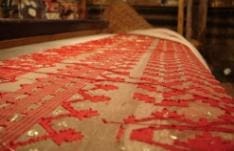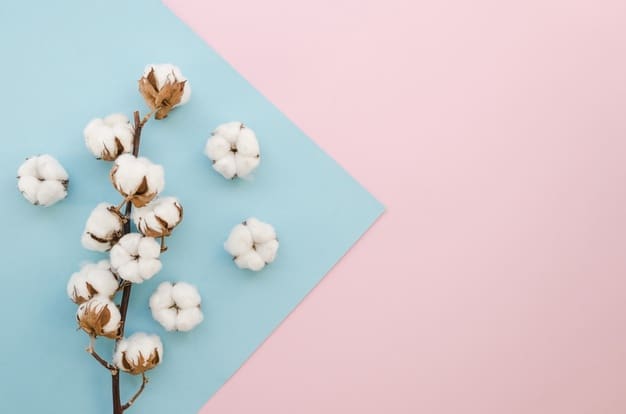Introduction
India has been well known for textile since very ancient times. The origin of Indian textiles can be traced to the Indus valley civilization as early as 5th millennium BC. The people of that civilization used homespun cotton for weaving their garments and used indigo to color their fabric [1].
Clothes are one of the most creative ways of expressing individuality, lifestyle and culture. Every community, region and culture has its own distinct way of dressing and clothing. India has a rich heritage of art and crafts which is reflected in its textiles and fabrics. The art of weaving and dyeing of fabrics was practiced in India from very ancient times. Cotton in particular was core to Indian textiles and has been cultivated here since ancient times. Ancient travelers described cotton cultivation as sheep growing on trees, for they only knew white wool, which was taken from sheep. The centres known for very finely woven cotton were in Bengal, Varanasi, Chanderi and in the towns of Uppada, Mangalagiri and Venkatagiri of Andhra Pradesh and many more [2].
Amongst the different types of fabrics available in India—chiefly wool, jute, hemp, silk and cotton—it is cotton that offers the richest styles of expression. While other fabrics have a distinct quality in texture, cotton being relatively flat has been explored most ingeniously by Indian weavers in terms of colours and designs to create striking results [3].
TRADITIONAL TEXTILES USING COTTON

Image no. 2 Kalamkari on Cotton Fabric

Image no. 3 Jamdani Weave on Cotton Fabric
Jamdani
Jamdani means a vase of flowers. Saris are woven using this method are called as terchha. [1] Made with handspun and handwoven cotton, Jamdani uses the extra-weft technique where the weaver manually introduces opaque motifs on a base of translucent cotton while weaving. The test of a true Jamdani, it is said, lies in submerging the fabric in water. The fine muslin base should all but disappear, and the motifs appear to float freely. [4]
Punja Durries
Before the Mughals introduced Persian carpets to India in the 16th century, we had durries. Woven from cotton, wool and even camel hair, India had a rich tradition of weaving floor-coverings that, according to some Buddhist texts, goes back to 500 BCE. [4]
Kalamkari
Kalamkari is an ancient style of hand painting done on cotton or silk fabric with a tamarind pen, using natural dyes. The word Kalamkari is derived from a Persian word where ‘kalam‘ means pen and ‘kari‘ refers to craftsmanship. There are two identifiable styles of Kalamkari art in India – Srikalahasti style and Machilipatnam style [5].
Ikat
Craftsmen have devised different design and weaving methods, chief amongst them being bandhani, kalamkari, block print and ikat. Ikat is the most intricate and elaborate of all these methods involving resist dye as well as weaving of loose threads post the dyeing. If both warp and weft are resist dyed the resultant weave is called ‘double ikat’ which is primarily associated with the patola ikats of Patan, in Gujrat (Figure 1). And if either the weft or the warp yarn alone is dyed, the weave is termed ‘single ikat’, more widely produced in Odisha [3].
Kota Doria
Kota Doria fabric has a square weave pattern which makes it one of the finest open weave fabric .The cotton, silk and zari (fine metal threads) yarns are woven on the pit loom that produces these patterns. The cotton yarn provides stiffness and silk provides lustre to the fabric.
Kunbi Sari
Kunbi is a cotton chequered sari in red and white with a sturdy weave good enough to be worn for farming. It has a dobby border, which is essentially a silken flat inset.
Ilkal Sari
With its origin in the Ilkal town of Karnataka, Ilkal is woven using cotton warp on the body and art silk warp for border and silk warp for the pallu portion of the saree. Pallu and body are joined with kondi technique. red and white are the main colors.
Mangalgiri
It is a fabric in prominently cotton with a zari border. Main body which is totally plain and zari border are in contrasting colours.
Sanganeri Print
Sanganeri printing gained high popularity in the 16th and 17th centuries in all European countries with its Calico prints and became one of the major exports of the East India Company. Sanganer motifs are mostly floral based and intricate detailing.
Chanderi
A beautiful blend of Cotton, Silk thread and zari results in Chanderi fabric. Traditional looms are used as a primary means of production. These include Dobby & Jacquard Looms. Most
Chanderis have a rich gold border and butis all over fabric. Some have gold checks or little motifs (known as butis).
Bandhani
Dyed in tie & dye style, the art of bandhani is a highly skilled process. In this the fabric is tied into small points with threads and when dyed, the knotted parts remain uncoloured. Different types of tying methods are leheriya, ,mothda,ekdali, trikundi, chaubandi, etc. It is also known as Bandhej, and is made on superfine cotton, mulmul, muslin, etc [1].
Conclusion
Cotton is an age old textile, which has been used in Indian Textiles. The traditional Indian Textiles are majorly made using Cotton due to its availability, comfort, cost, dyeing, care and various other properties. Although the use of these traditional textiles have reduced due to the advent of Fast fashion and Western influence, these textiles and Cotton being the Heritage fabric of India is surviving in these conditions. Recently due to more knowledge and publicity the Traditional Textiles are being revived and the younger generation is accepting these textiles in new garment designs.
References
- Noopur, S. (2018, March 17). Textiles of India. Retrieved from https://medium.com/@noopurshalini/textiles-of-india-d9f5e5310dc6
- Artistic Heritage in Indian Textiles, (2008, September). Retrieved from https://www.fibre2fashion.com/industry-article/3660/artistic-heritage-in-indian-textiles
- Meher, S. (2017, November 6). The Sambalpuri Ikat of Odisha : History, Symbolism and Contemporary Trends. Retrieved from https://www.sahapedia.org/the-sambalpuri-ikat-of-odisha-history-symbolism-and-contemp orary-t rends
- Rana, V. (2019, November 8). 10 Fabrics that are a Reflection of Indian Heritage. Retrieved from https://www.cosmopolitan.in/fashion/features/g18932/10-fabrics-are-reflection-indian-her itage#s lide-17
- Kalamkari. Retrieved from https://www.utsavpedia.com/motifs-embroideries/kalamkari-art/
Image References
Image no. 1 Cotton – https://denimhunters.com/denim-wiki/denim-explained/cotton/
Image no. 2 Kalamkari on Cotton –
https://www.luxeva.com/2019/07/craft-revival-an-ode-to-the-glorious-fading-textile-form-of-kal amkari/
Image no 3 Jamdani Weave on Cotton Fabric –
https://www.unnatisilks.com/blog/jamdani-a-fine-art-weave-attachment-on-fabrics-part-i/


